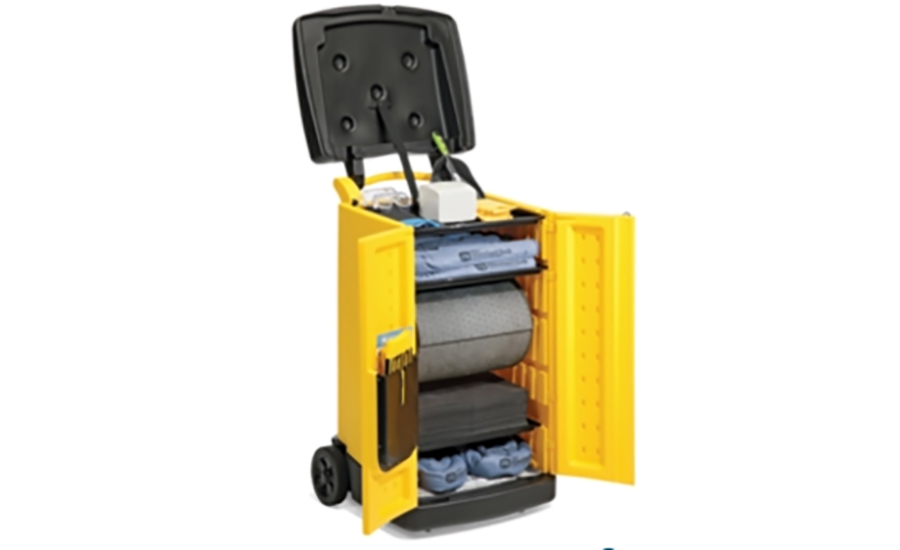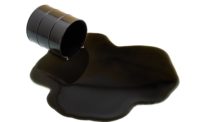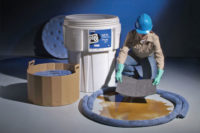Plan to be prepared: Spill response readiness in a pandemic world

Adjusting to the “new normal” during the Covid 19 pandemic means implementing new safety practices or improving those you currently have in place. Most of us are already following guidelines from the Center for Disease Control (CDC) and the World Health Organization (WHO) such as wearing masks, washing and sanitizing hands more frequently and practicing social distancing. But have you evaluated your current spill response plan? Even if it meets your company’s pre-pandemic goals, it may not account for the new liquids in your facility such as bulk hand sanitizers, disinfecting cleaners and other sanitizing chemicals.
Spills can happen anywhere, and an up-to-date plan will help keep everyone safe, no matter what types of liquids you store.
Review or create a spill response plan
If you haven’t done so already, this is a perfect time to review or create your spill response plan. Accidental spills can disrupt operations and pose a threat to employees, visitors and the environment. Preparing for a potential spill includes identifying liquid storage areas, knowing the types of liquid on site, and the total volume of the liquids you store. Work with your Environmental Health and Safety (EHS) manager, supervisor or company specialist to identify the areas covered in your plan. Include a list or map of where spills may occur and their proximity to drains and points of egress. Consolidate your information and keep it in a secure location. This data will support regulatory compliance and employee training requirements for spill response and serve as a record when changes take place.
Choose the right absorbent materials
Knowing what liquids are stored at your facility is essential to selecting absorbents that are chemically compatible. Universal absorbents work great for water-based liquids, but what about caustics, acids or unknowns like biohazards? Then you’ll need hazardous material (haz mat) absorbents to ensure chemical compatibility. If you’re unsure about what type of absorbents to select, consult with your safety manager or other expert. Absorbents are also available in multiple formats, such as mat pads, socks, booms, pillows and loose.
Once you know what type of absorbents you need, it’s time to pick the proper spill kit. For example, universal spill kits containing cellulose and polypropylene based materials work well for most cleaners and sanitizers. Make sure the kit has enough absorbents to match or slightly exceed the full volume of a spill.
Your spill kit needs to be in proximity to a potential spill area so that you or your employees can take quick action to stop the liquid from spreading. If you have a number of spill-prone areas, you should equip each one with the appropriate spill kit. This will reduce the likelihood of dangerous liquids escaping down a drain or endangering the safety of employees or visitors. Make sure your spill kits are easily identifiable by using signs at spill kit locations, labeling the type of absorbents in the kits, and selecting high visibility containers.
Spill response kits are available in many formats ranging from small grab-and-go containers to portable bags that fit behind a vehicle seat to large, wheeled carts. Select the container that best suits your potential spill location and inspect it regularly to make sure it contains the proper absorbents and that they’re in good condition.
Select appropriate PPE
Another important requirement for spill response is having the appropriate Personal Protective Equipment (PPE) available. Safety comes first when responding to a spill, so be certain to stock equipment to protect the face, eyes and body. PPE may include — but is not limited to — goggles, face shields, suits, aprons and gloves that are chemically compatible with the spilled liquid.
Check with your local authorities or safety manager about regulatory guidance and requirements. Provide instructions or train employees on the proper use of PPE. This includes making sure that goggles have a snug fit and removing suits or gloves without transferring liquid onto the skin.
Stay current on training and planning
Keep your company spill response plans up to date with the latest information on the fluids stored and their locations. Make a note whenever you update current stock or add new liquids such as hand sanitizers, disinfectants or other cleaning chemicals.
Make sure employees know where your spill kits are located and train them on spill response tactics:
- Creating awareness of the physical layout of the spill
- Surrounding the spill to stop the spread
- Absorbing the contained liquid
- Properly disposing of used absorbents
- Disinfecting the spill area
- Recording the instance
Some spills require the expertise of trained emergency staff to clean them up, so you may need an evacuation plan. Safety education on all job sites and facilities should always come first, so ask your EHS Manager for additional guidance and keep your employees in the know with the most current information.
The key to effective spill response is preparedness:
- Continually update your spill response plan
- Choose absorbents that are chemically compatible with the liquids stored
- Equip your spill-prone areas with spill kits that can handle the liquid volume
- Stock appropriate PPE for responders
- Train your employees on proper spill response methods
By staying on top of the liquids you’re storing and continually updating your spill plan, you’ll keep your employees and facility safe — especially now, as everyone adjusts to the “new normal.”
Looking for a reprint of this article?
From high-res PDFs to custom plaques, order your copy today!





